

Max Davies
How Audi, BMW, Honda, Mercedes-Benz, and Suzuki started out in Australia, and where they are now
15 Hours Ago
The Suzuki S-Cross has been given a big mid-life update, but it's carrying a bigger price to go with it. How does the Prestige stack up?
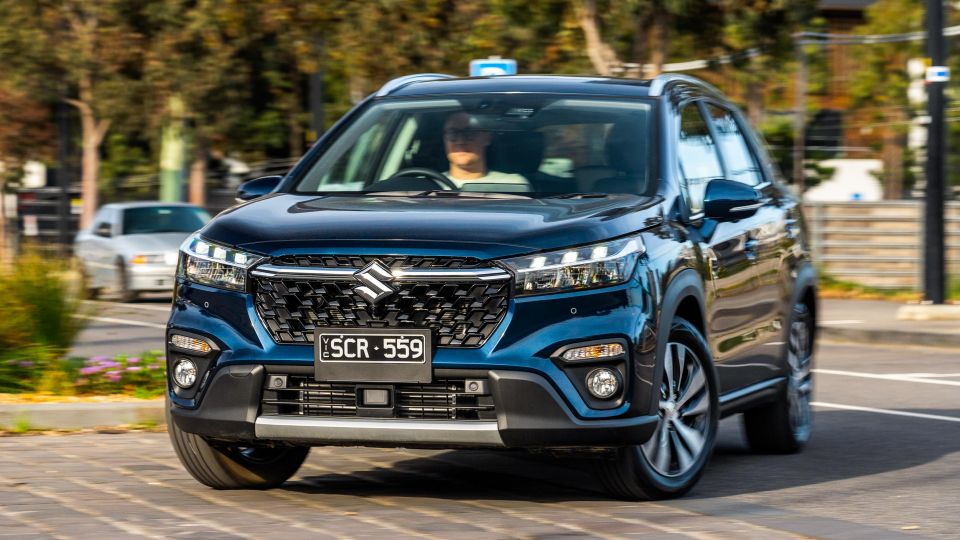
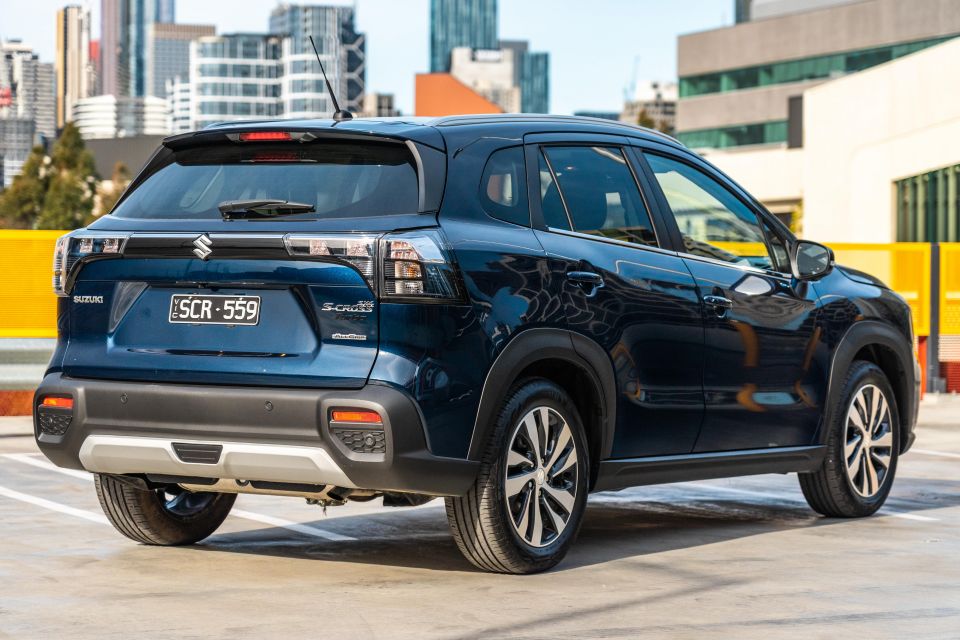

Quickly see how this car stacks up against its competition. Select any benchmark to see more details.
Where expert car reviews meet expert car buying – CarExpert gives you trusted advice, personalised service and real savings on your next new car.
Suzuki Australia is hard not to like.
Its light-hearted advertising is a blessed relief from the serious way most brands pitch themselves, and its range is equally as fun. The Swift Sport is a riot and the Jimny is a cult hero, with a waiting list long enough to make a RAV4 feel inadequate.
The latest addition to its range is the S-Cross. It’s the biggest car Suzuki offers, given the Grand Vitara is long gone, and wears a new look that should appear to a broader cross-section of people in the hotly-contested world of small SUVs.

Front-wheel drive is out for 2023, replaced with AllGrip all-wheel drive across the range, and the interior has a new, bigger screen in range-topping Prestige models.
The price has also been increased significantly, throwing the Suzuki S-Cross into the deep end with the big boys in a tough corner of Australia’s competitive new car market
Is the new range-topping S-Cross another likeable underdog from Suzuki, or has the price hike made this SUV hard to love?

The Suzuki S-Cross has been hit with a big price hike, even by 2022 standards. The old model was front-wheel drive only, and started at $30,490 before on-road costs.
The facelifted car is all-wheel drive only, and kicks off at $40,490 before on-roads. The Prestige on test here has a $44,490 sticker before on-roads, up $12,500 on the equivalent pre-update car. Ouch.
Rather than the Hyundai Venue and Kia Stonic, the steep new price pits the S-Cross among some of the best-selling small SUVs in the country, along with entry-level versions of medium SUVs.
A range-topping, all-wheel drive versions Kia Seltos GT-Line is priced at $42,700 before on-roads, while the Mazda CX-30 G25 Astina AWD has a $44,690 sticker price. The updated Volkswagen T-Roc R-Line goes for $44,700 before on-roads with its 140kW powertrain. If you’re thinking of going electric, you’re not far from MG ZS EV money either.
The S-Cross might have a more generous equipment list and all-wheel drive, but it’s not what you’d call good value. It’s the most expensive car Suzuki has even sold in Australia.

Buy your new car without the stress. It's fast, simple and completely free.

Great service from Travis and team, second time I have used this business would not hesitate to recommend them to anyone
Craig C.
Purchased a Ford Ranger in Sunshine Coast, QLD
CarExpert helped Craig save thousands on his Ford Ranger, now let us save you on your next new car.
Find a dealThe S-Cross features a more modern take on the wing-shaped dash from the previous model, with what looks like leather trim on the dashboard ahead of the driver and passenger, and silver trim in the air vents. Only the Prestige gets that extra bit of silver trim; the base model has black vents.
The driver and passenger sit in generously padded cloth seats with leather bolsters. You sit high, with a commanding view of the road ahead, and there’s enough space for tall drivers to get comfortable without too much stress.
The seat heaters aren’t particularly effective in the Prestige, and the short seat cushions don’t offer all that much support on longer drives, but it’s an easy enough place to spend long periods of time.
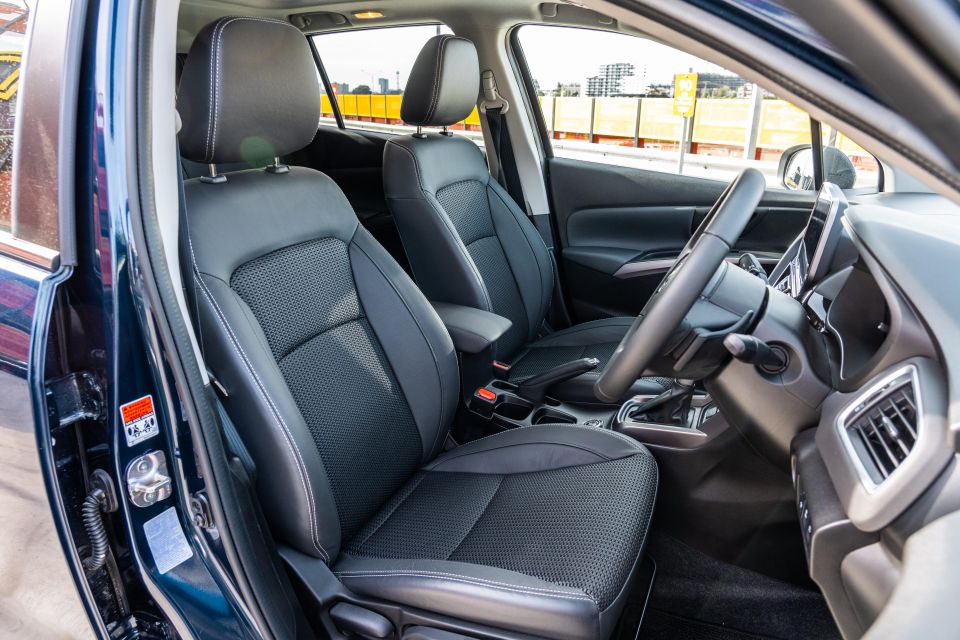
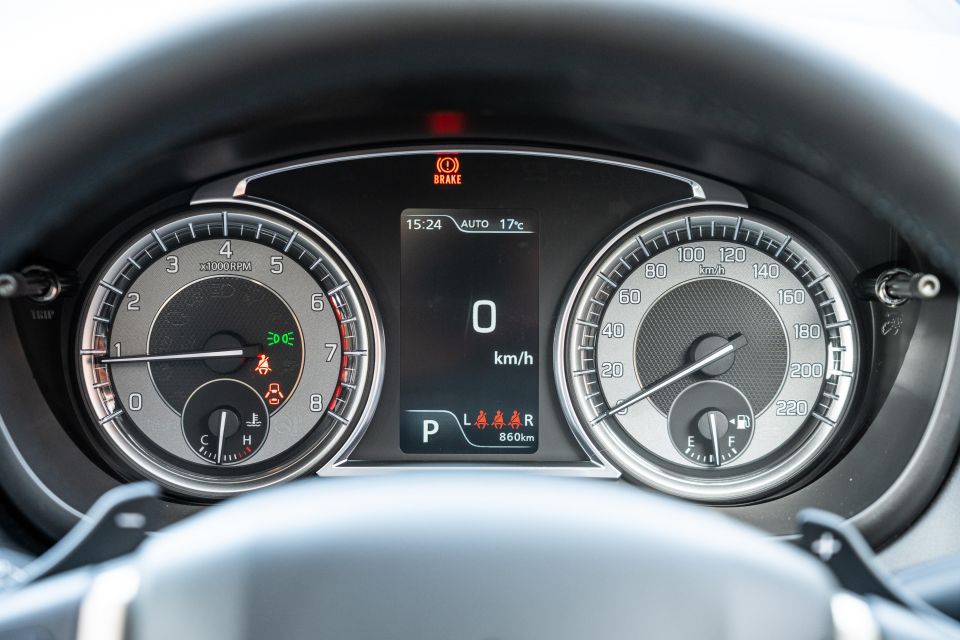
Even with the sunroof there’s plenty of headroom, and the tall windows mean it feels airy behind the wheel. In a world dominated by crossovers with sloping roofs that murder headroom, the upright S-Cross is refreshingly easy to place in traffic.
Anyone who’s driven a Swift or Baleno will recognise the steering wheel, shifter, and handbrake, which doesn’t say much for the S-Cross Prestige’s premium intentions. Although the padded armrests, leather-trimmed wheel, and leather-bolstered seats go some way to lifting the ambience, there’s no escaping the car’s budget origins.
The tinny doors, complete with trim inserts that noticeably moves when you wind down the window, don’t do much to lift the feeling of quality either.
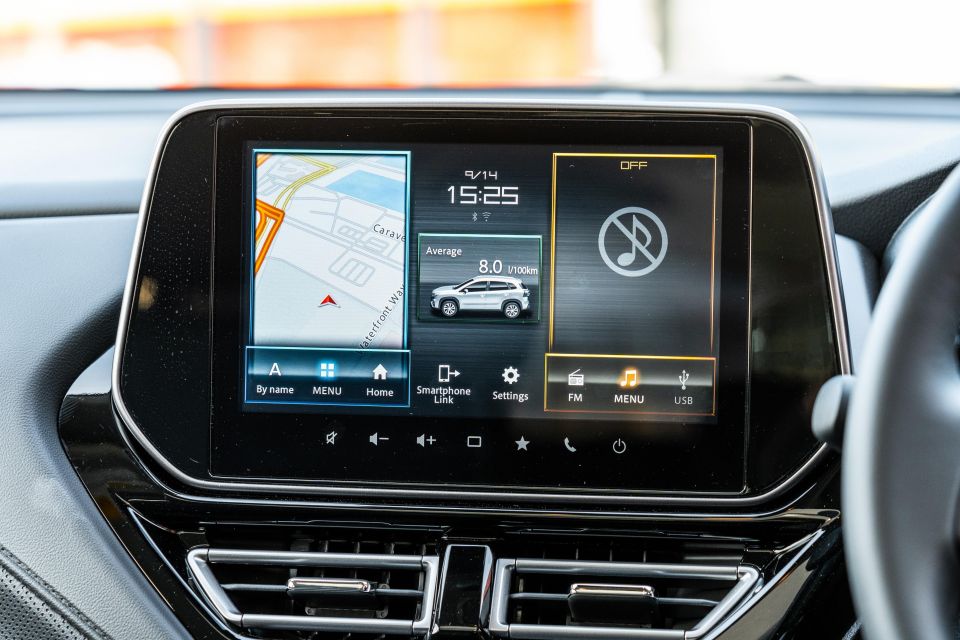
The flagship Prestige features a 9.0-inch touchscreen in place of the 7.0-inch unit that features on the base model, with inbuilt satellite navigation and a flash surround-view camera that starts up with a 360-degree flyover of the car.
Android Auto is wired, while Apple CarPlay can be wired or wireless. It’s worth noting you only get one USB-A port up front.
The feature set is strong, and the layout is better than what we’ve seen from previous Suzuki infotainment systems, but the plastic touchscreen feels cheap and makes smooth scrolling a nightmare. It looks a bit aftermarket relative to what Mazda or Volkswagen offers, which isn’t good enough at this price point.
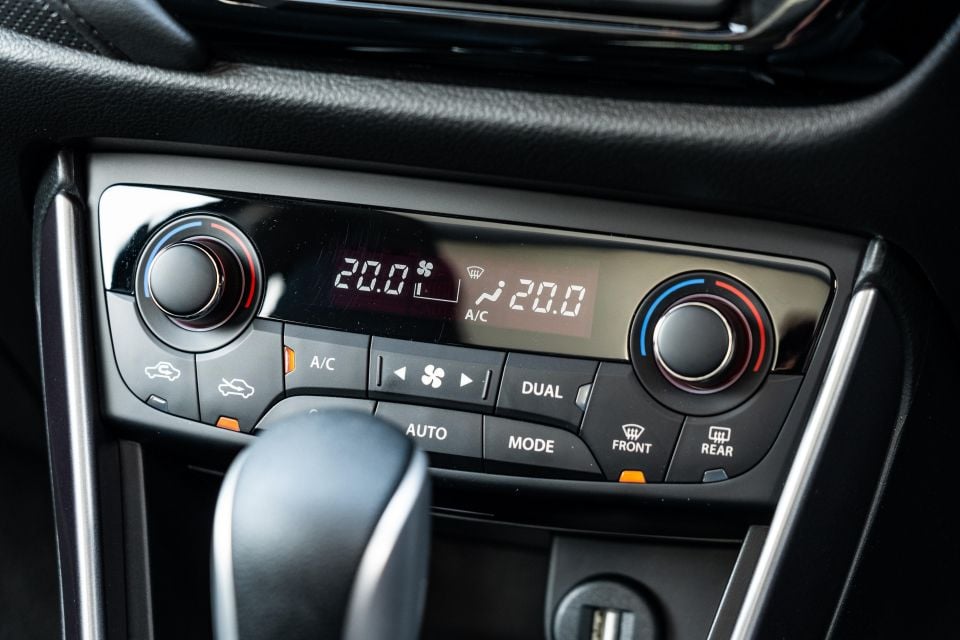
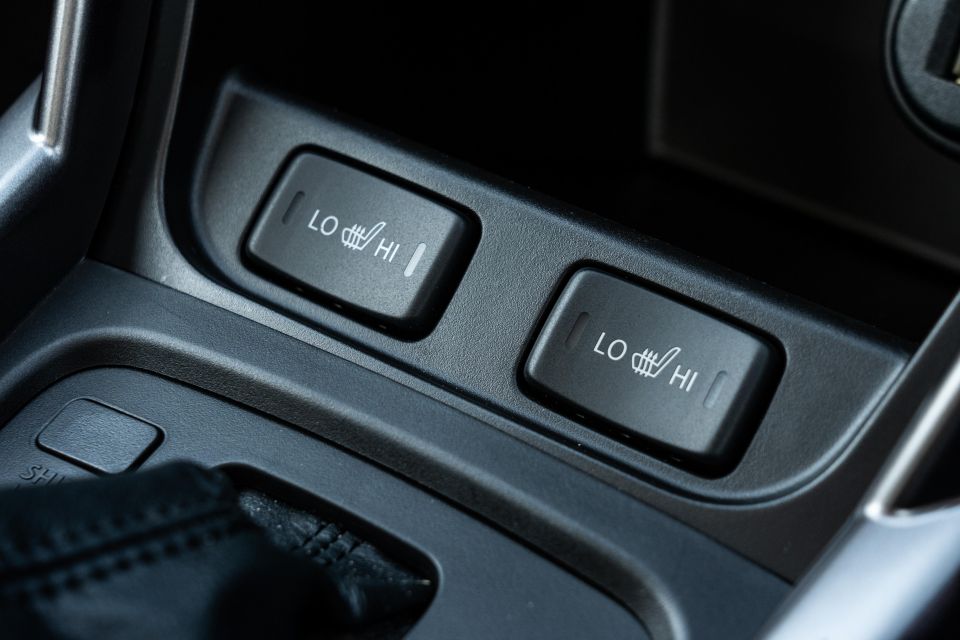
There’s a simple, easy-to-use climate control binnacle below the touchscreen, with a basic display showing your temperature and air-conditioning mode.
Storage space is decent up front, with two open cupholders, a decent underarm storage bin, and a slot at the base of the dashboard. You don’t get a wireless phone charger, which you really should at this price.
At 4305mm long and 1785mm wide the S-Cross is smaller than a Seltos or Mitsubishi Eclipse Cross, but it’s reasonably spacious in the back seat. Legroom is decent behind an adult driver, and there’s decent headroom thanks to the boxy profile.
The Prestige with its sunroof does suffer somewhat in the headroom stakes, but that’s common across the class. Kids and short adults will fit back there, but taller teens or adults will have their head rammed into the roof lining.
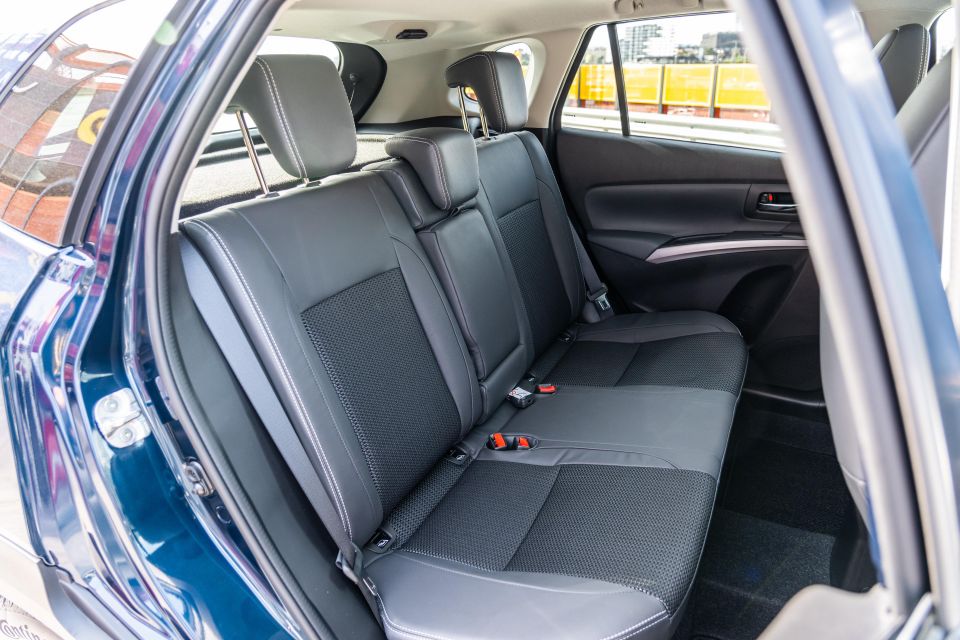
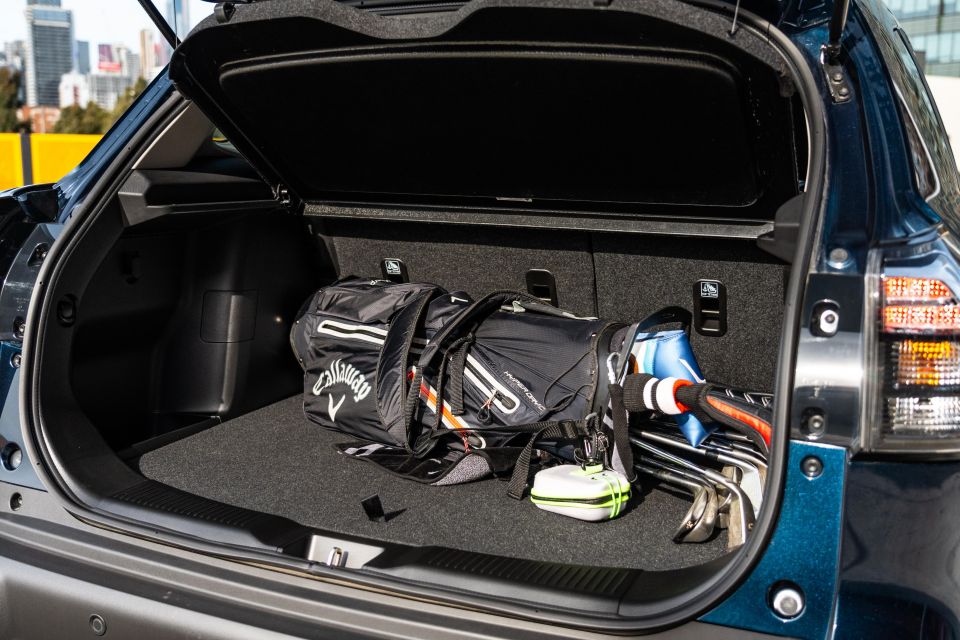
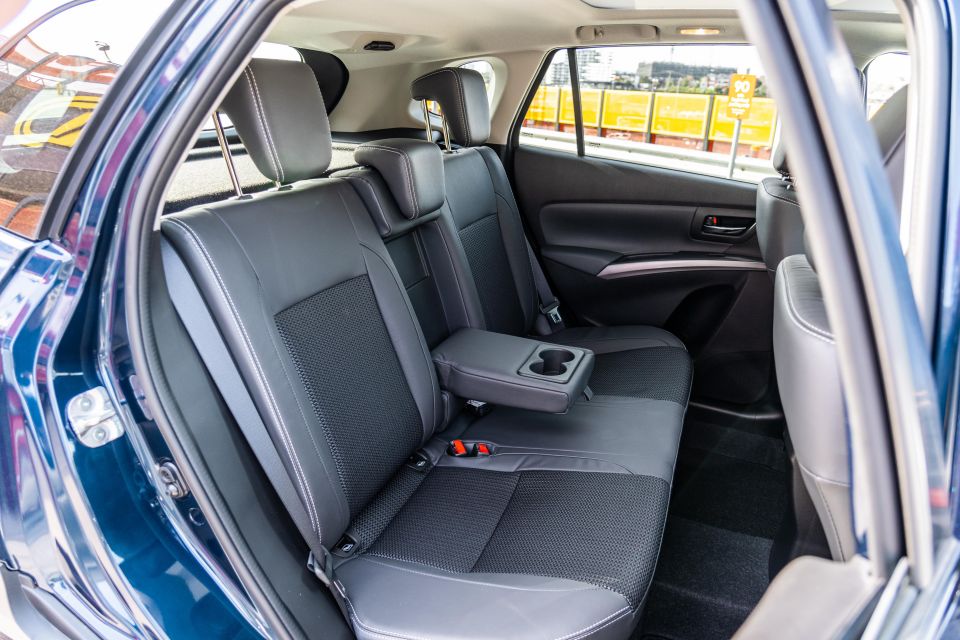
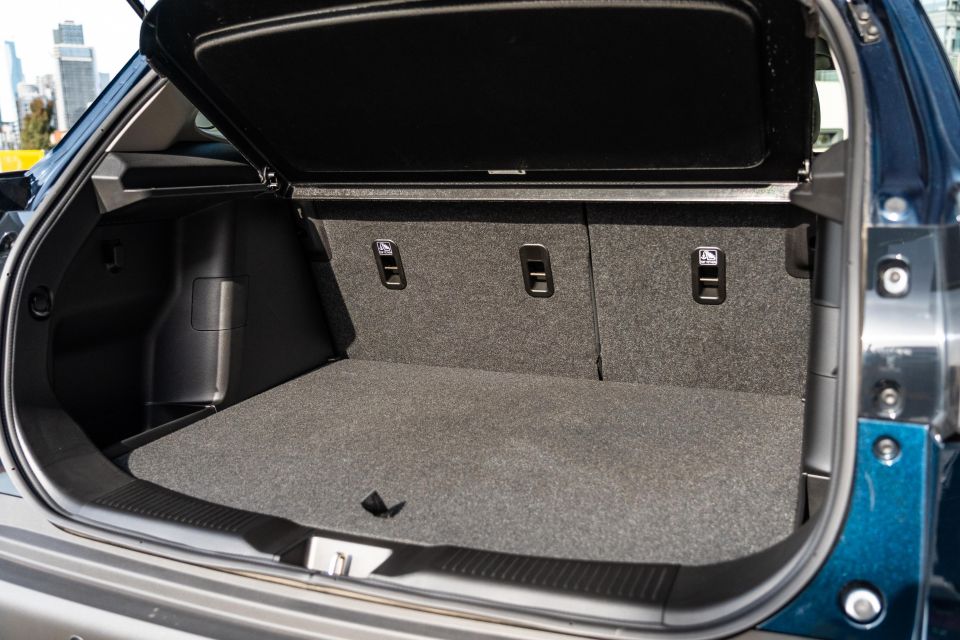
With no air vents or USB ports, the rear seats are short on amenities standard elsewhere in the class.
You get a fold-down central armrest with cupholders, but the lack of vents back there in particular is an issue if you’re carrying kids around in summer.
Boot capacity is 430 litres, expanding to a maximum 1230L with the back seats down, folded 60:40. There’s a two-level loading floor, small storage tubs, and a 12V socket, plus a temporary spare wheel underneath.
The dual-tier boot floor allows you to choose between a flat loading lip or an extra chunk of space.
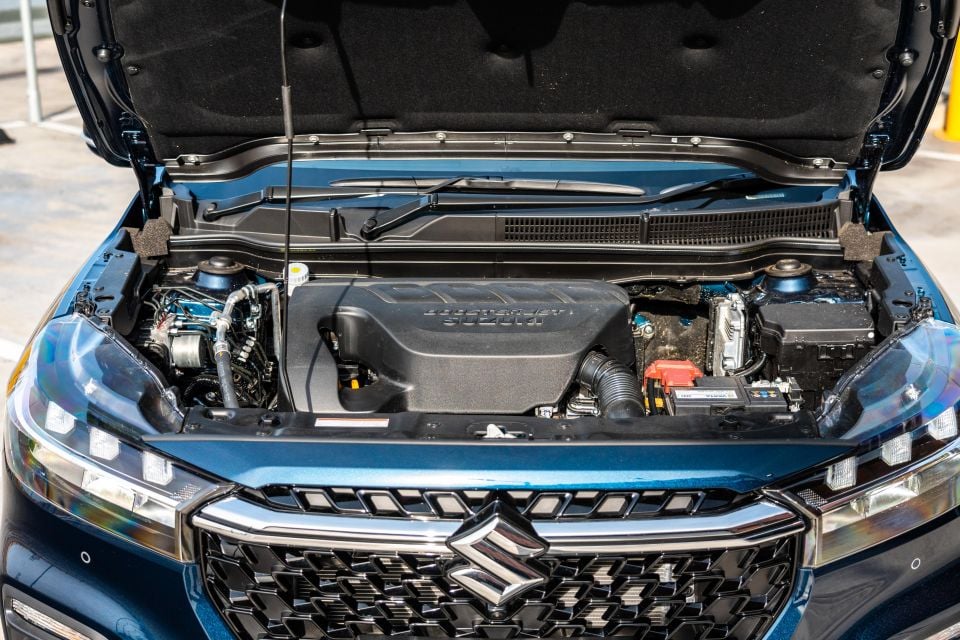
The engine in the S-Cross carries over unchanged. It’s a 1.4-litre turbocharged petrol with power and torque outputs of 103kW and 220Nm respectively.
It runs through a variable all-wheel system with an available 50:50 locking mode, but which preferences the front tyres on tarmac to save fuel. The transmission is a six-speed torque-converter automatic with paddles, but no manual transmission option is available in Australia.
Suzuki quotes a combined-cycle fuel consumption figure of 6.2 litres per 100km, equating to emissions of 145g/km.
We saw 5.4 litres per 100km on a highway run, and around the 8.0 litres per 100km mark in the city.
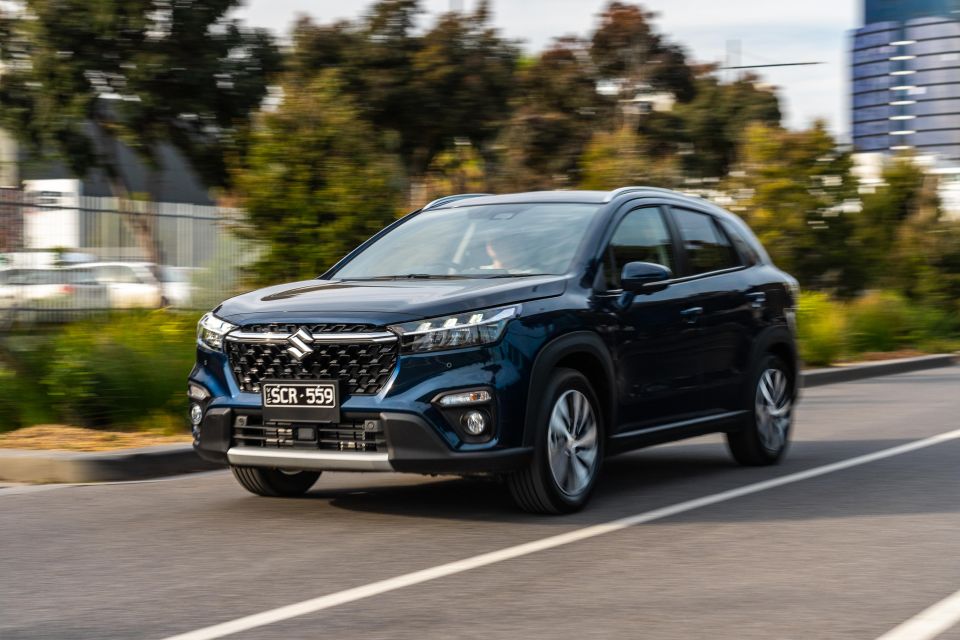
The S-Cross is one of the most enjoyable small SUVs out there to drive, thanks in no small part to its skimpy kerb weight.
It’s around 200kg lighter than a 2.0-litre Mazda CX-30, and even in flagship Prestige guise weighs less than a Toyota Corolla hatchback, which pays off in the form of punchy performance and nimble handling.
Suzuki’s turbocharged engine (charmingly named BoosterJet) doesn’t exactly shape up as a powerful beast on paper, but with so little mass to move it feels punchy in the real world.
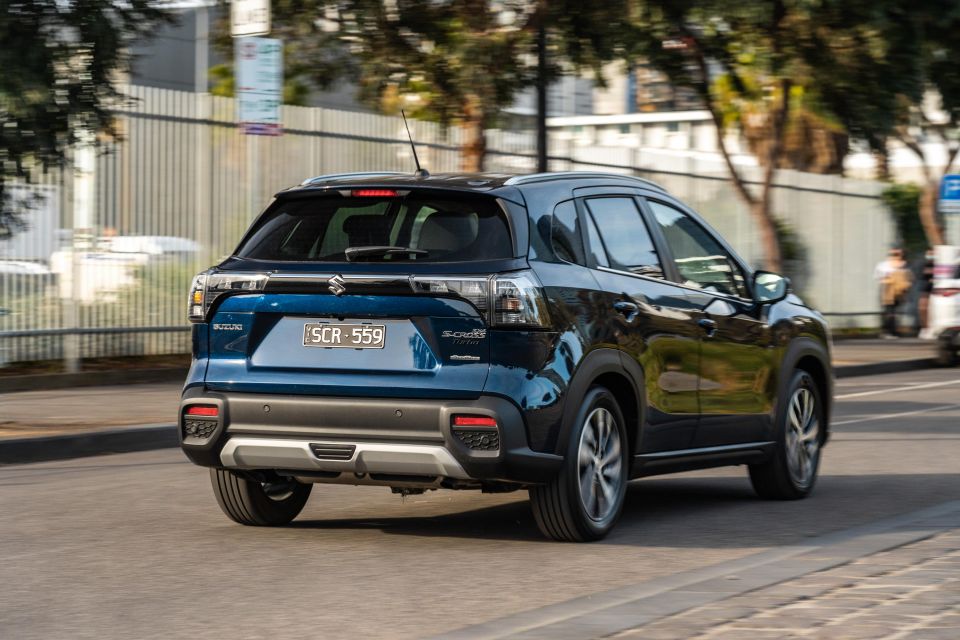
Put your foot down and it pulls smoothly from down low, with a decent shove in the back through the mid-range. The six-speed automatic will hang onto gears all the way to redline when you bury the accelerator, and is keen to kick down if you’re in a hurry.
When you’re just cruising around town, it shuffles unobtrusively though the gears. There’s no learning curve, as is the case in some rivals with dual-clutch transmissions, which means anyone hopping out of an older car will immediately feel at home. With that said, auto brake hold and idle start/stop would be handy inclusions.
Although there are plastic paddles behind the wheel to shift gears yourself, they aren’t particularly satisfying to use – nor does the torque converter feel all that snappy when you take manual control.
Traction from the AllGrip all-wheel drive system is solid in dry conditions. Although it’s front biased, you can’t catch it napping with a quick boot of throttle – it just shuffles torque rearward and hooks up neatly off the mark.

The addition of a manual 50/50 lock mode for the all-wheel drive system (itself part of Snow Mode, which dulls the accelerator and relaxes the ESP) comes in handy on unsealed roads, and affords drivers an extra degree of control over how their car is operating relative to rivals.
Although the engine itself isn’t particularly shouty, the cabin gets quite noisy on the highway. There’s more tyre noise and wind rustle from the mirrors than is ideal, although it’s no worse than European rivals on sporty rubber.
With light, direct steering and what feels like a keen front end, the S-Cross loves being thrown around in a way few SUVs can match. It feels like an overgrown Vitara, with the right amount of body roll and plenty of grip.
Ride comfort is decent, but the S-Cross does thwack and thud over speed bumps and potholes in a way that exposes its budget origins. Not only are sharper bumps felt more than they should be, there’s more noise in the cabin than you’d expect of a $45k car when you hit them.

Suzuki outfits the S-Cross with a decent range of driver assists. The adaptive cruise control does a good job maintaining a gap to the car in front, and the lane departure warning is smart enough to intervene only when you’re actually drifting over the white lines.
There’s no active lane-keeping assist to steer you back into the lane, however, nor is there lane-centring to lessen the burden on long highway drives by more actively taking charge of the steering. Both are features becoming common in similarly-priced rivals.
Suzuki’s forward collision warning is a bit trigger happy, sounding a shrill alarm in situations where there’s no chance of a collision, although we didn’t experience any phantom braking from the autonomous emergency braking system.
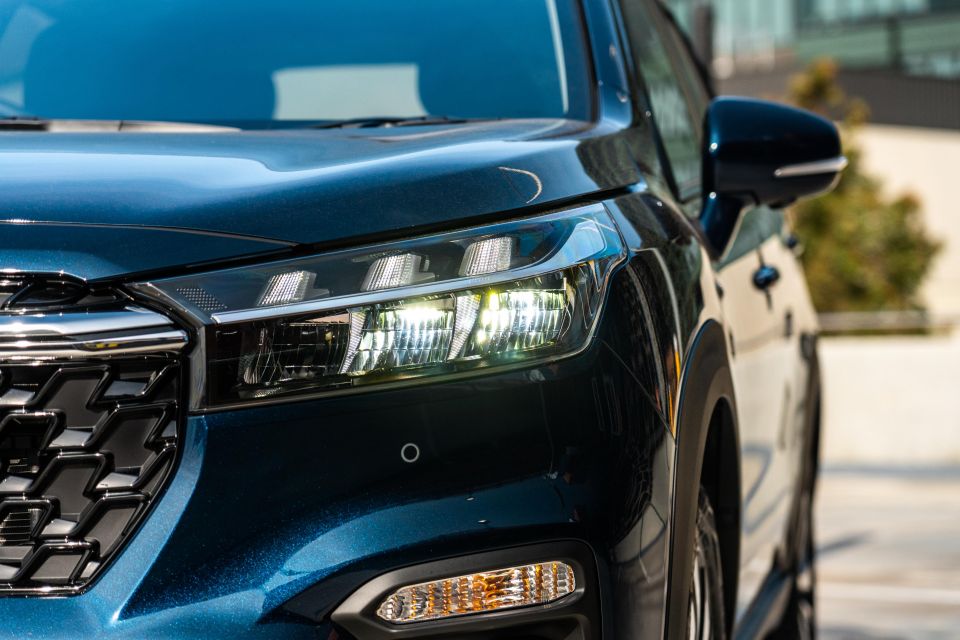
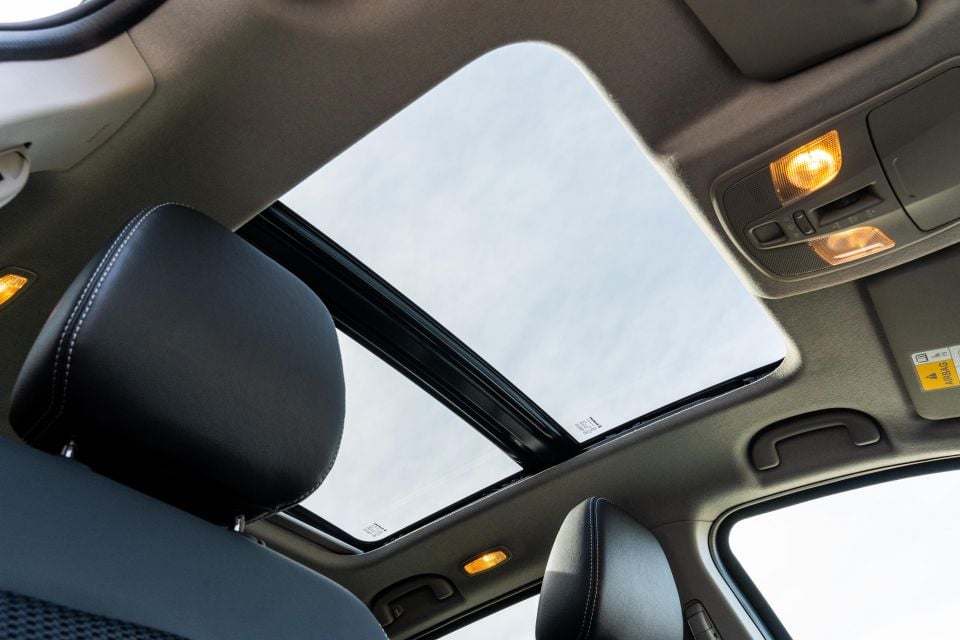
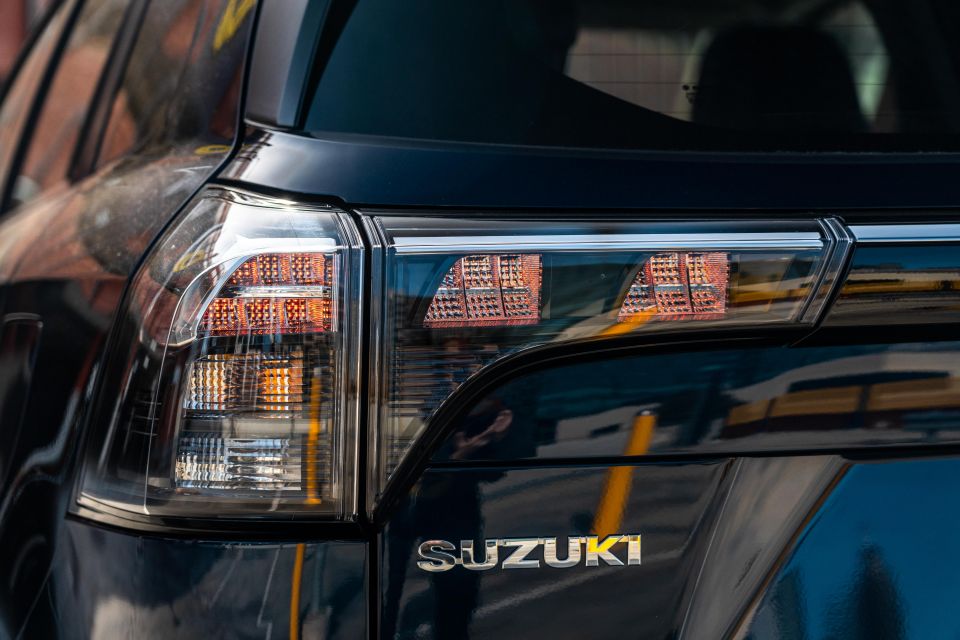

Where expert car reviews meet expert car buying – CarExpert gives you trusted advice, personalised service and real savings on your next new car.
S-Cross highlights:
S-Cross Prestige adds:
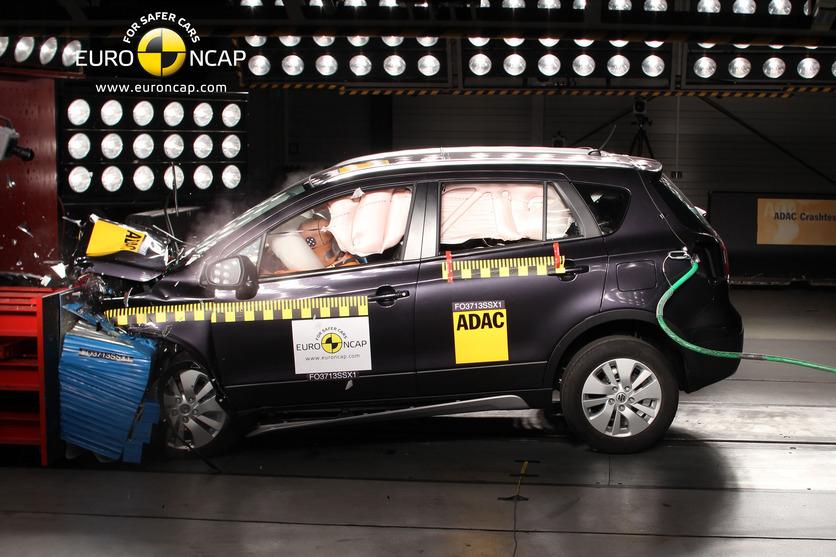
This updated S-Cross doesn’t have an ANCAP safety rating.
The old model had a five-star rating, but it was based on testing carried out in 2013. It’s not clear if Suzuki will re-test the new model to earn a 2022 rating.
Standard safety features include:
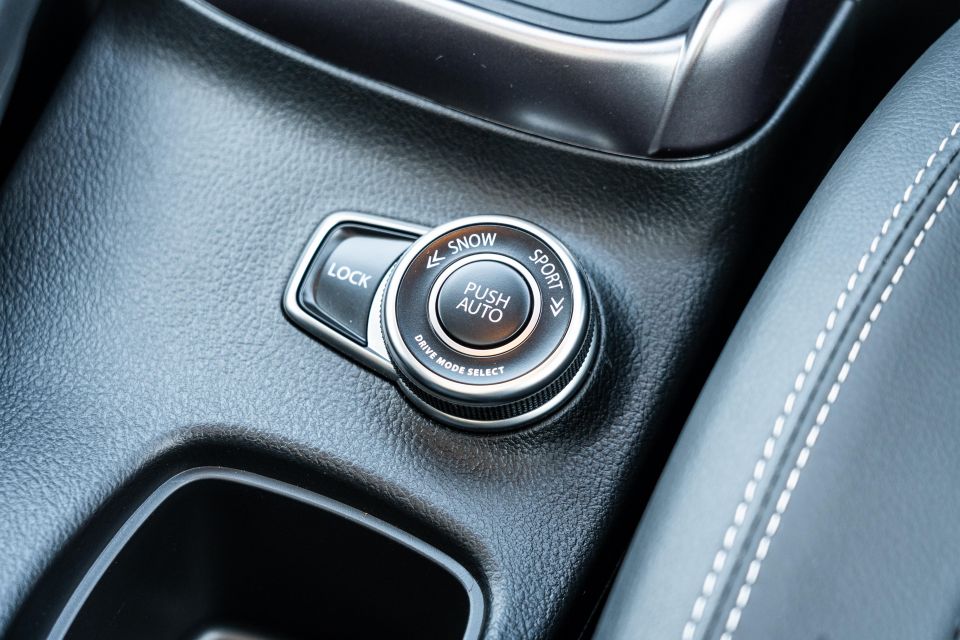
Suzuki’s provides a five-year, unlimited kilometre warranty with roadside assist and capped-price servicing.
Maintenance is required every 12 months or 10,000 kilometres – whichever comes first.
The first five services will set you back a combined $1945.

The S-Cross is a classic case of right car, wrong price.
It’s fun to drive, packs plenty of space inside, and has most of the technology offered in its rivals, but it can’t come close to matching their polish or refinement.
If it was $10,000 cheaper than it is, that would be forgivable. The way it’s priced, it’s impossible to ignore.
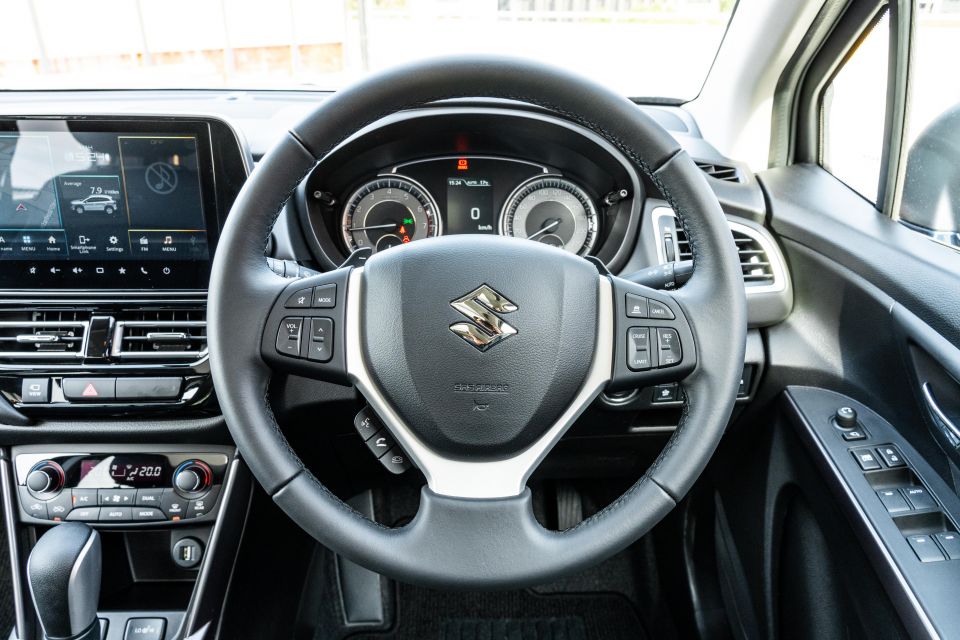
Suzuki offers another fun-to-drive SUV in the form of the cheaper Vitara, which is where we’d be looking if you’re married to the brand. Like the S-Cross it’s light on its feet, and packs a turbocharged punch in the back, but it has a more palatable price tag.
If it’s an S-Cross you’re after, the Prestige isn’t the one we’d be opting for. Although it has more standard kit, it doesn’t feel all that premium inside considering the price.
You’re better pocketing the $4000 change and opting for the base model.
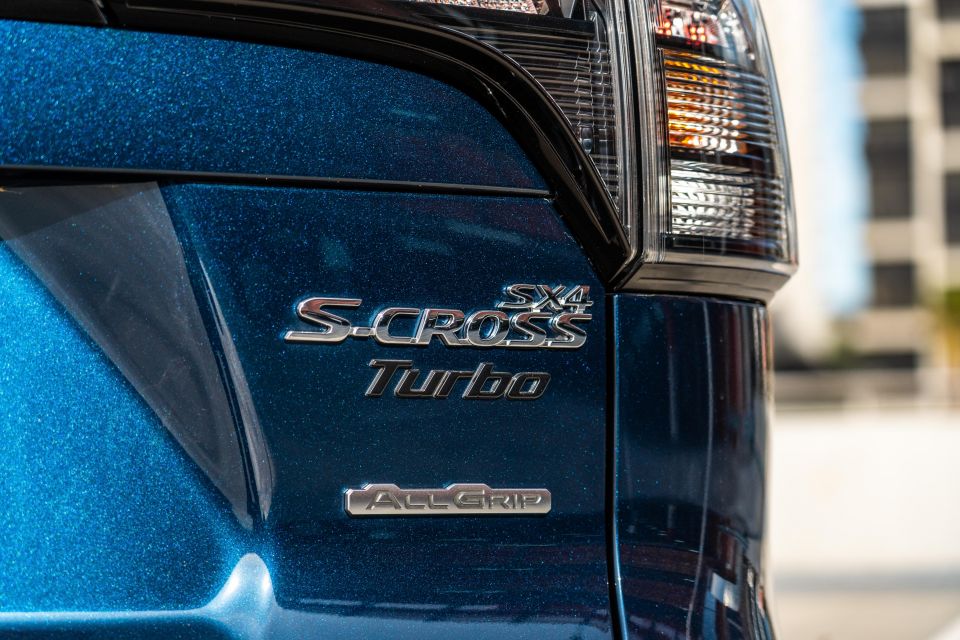
Click the images for the full gallery
Where expert car reviews meet expert car buying – CarExpert gives you trusted advice, personalised service and real savings on your next new car.
Scott Collie is an automotive journalist based in Melbourne, Australia. Scott studied journalism at RMIT University and, after a lifelong obsession with everything automotive, started covering the car industry shortly afterwards. He has a passion for travel, and is an avid Melbourne Demons supporter.


Max Davies
15 Hours Ago


William Stopford
15 Hours Ago


Derek Fung
16 Hours Ago


Max Davies
23 Hours Ago


William Stopford
2 Days Ago


Ben Zachariah
2 Days Ago